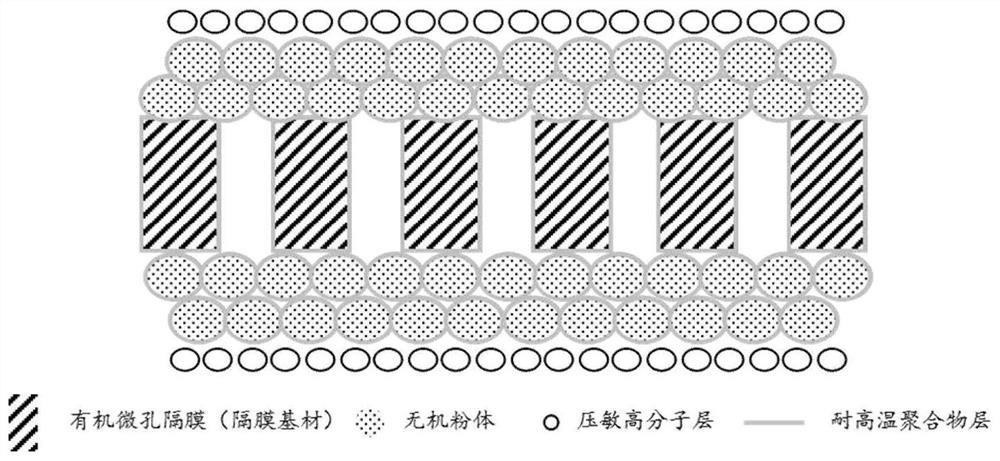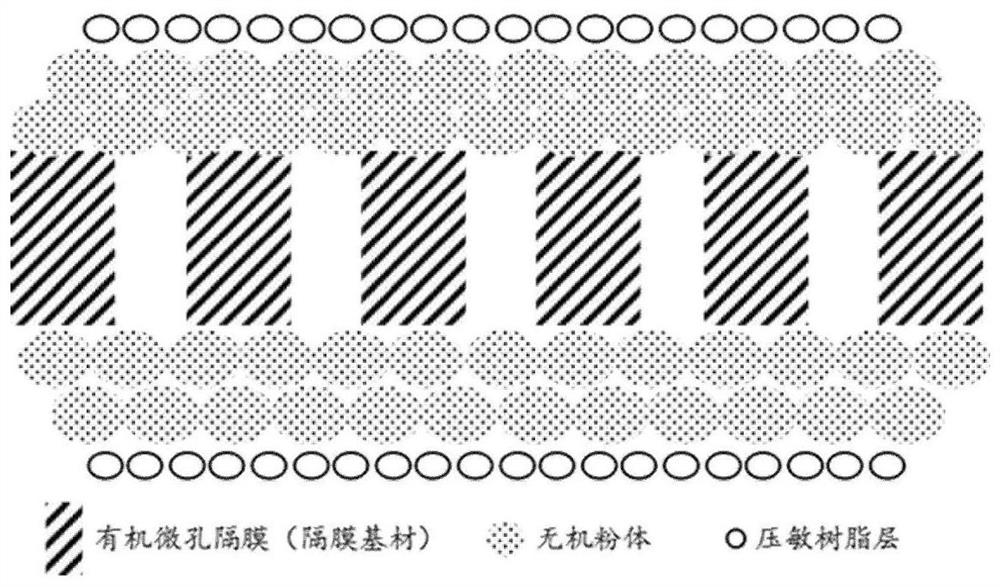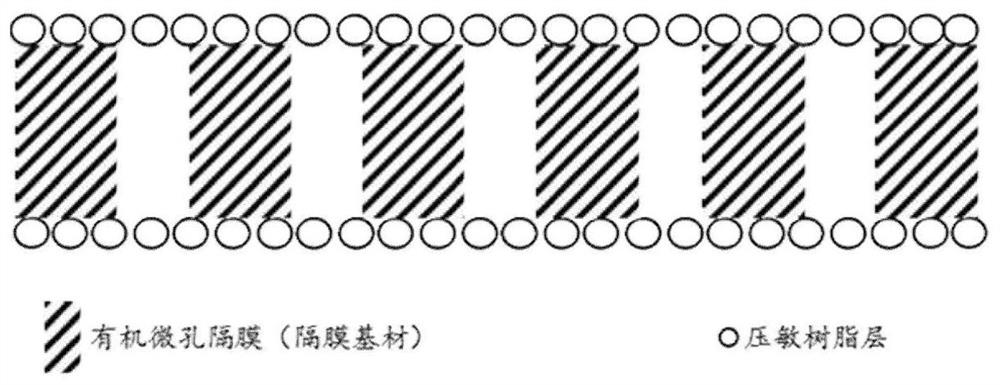Pressure-sensitive polymer modified diaphragm as well as preparation method and application thereof
A pressure-sensitive polymer, a technology of sensitive polymer, applied in the field of pressure-sensitive polymer modified diaphragm and its preparation, can solve the problems of restricting the popularization and use of energy storage batteries, increasing battery impedance, unable to meet the development requirements of energy storage batteries, etc.
- Summary
- Abstract
- Description
- Claims
- Application Information
AI Technical Summary
Problems solved by technology
Method used
Image
Examples
Embodiment 1
[0061] Step 1, preparing an ordinary ceramic diaphragm: fully mix silica spherical powder with a particle size of about 300nm, and a binder (styrene-butadiene rubber (SBR), carboxymethyl cellulose (CMC)) to form a slurry, which The mass ratio is: silicon dioxide / SBR / CMC=0.95g / 0.03g / 0.02g, the solvent is a water / ethanol mixture with a volume ratio of 1:1, and the mass ratio of liquid to solid is 90:10. The prepared slurry was uniformly coated on both sides on a commercial organic microporous polyethylene (PE) separator with an automatic coating machine, and after drying at room temperature, it was dried in vacuum at 50°C for 10 hours to obtain a silica ceramic coated separator. .
[0062] Step 2, preparing a high-temperature-resistant ceramic diaphragm: using a water / ethanol mixture with a volume ratio of 1:1 as a solvent, and preparing a 50 g / L phenolic resin solution with a molecular weight of 1000. Pour the previously prepared silica ceramic-coated diaphragm into the above-...
Embodiment 2
[0067] Step 1, preparing a common ceramic diaphragm: fully mix aluminum oxide powder with a particle size of about 200nm, binder (polyvinylidene fluoride), and solvent NMP to make a slurry, and its mass ratio is: aluminum oxide / polyvinylidene fluoride / NMP=0.80g / 0.05g / 0.15g, the prepared slurry is evenly double-sidedly coated on a commercial polyethylene (PE) diaphragm with an automatic coating device, after room temperature drying, 50 °C and vacuum-dried for 10 hours to obtain an aluminum oxide ceramic-coated separator.
[0068] Step 2, preparing a pressure-sensitive polymer composite diaphragm: dissolving 5.4 g of natural rubber in 17.5 g of toluene solvent, stirring on a magnetic stirrer for 24 hours, and ultrasonicating for 10 minutes to remove air bubbles. The obtained natural rubber solution is uniformly coated on both sides of a 20cm×6m aluminum oxide diaphragm on a small coating machine to obtain a common ceramic diaphragm composed of a pressure-sensitive polymer.
[...
Embodiment 3
[0072] Preparation of a pressure-sensitive polymer composite diaphragm: 5.4 g of natural rubber was dissolved in 17.5 g of toluene solvent, stirred on a magnetic stirrer for 24 h, and ultrasonicated for 10 min to remove air bubbles. The obtained natural rubber solution is uniformly coated on both sides on a 20cm×6m organic microporous polyethylene diaphragm on a small coating machine to obtain a pressure-sensitive polymer-composite ordinary polyethylene diaphragm.
[0073] Table 1 The conductivity and air permeability comparison table of various separators
[0074] project Example 1 Example 2 PE diaphragm Comparative example 2 Comparative example 3 Porosity 42% 41% 43% O% 0% Ionic conductivity ms / cm 0.684 0.536 0.756 - - Air permeability s / 100mL 395 389 375 gigantic gigantic
[0075] As can be seen from the above table, the porosity, electrical conductivity, and air permeability of the composite diaphragm after coating th...
PUM
| Property | Measurement | Unit |
|---|---|---|
| thickness | aaaaa | aaaaa |
| thickness | aaaaa | aaaaa |
| particle diameter | aaaaa | aaaaa |
Abstract
Description
Claims
Application Information
 Login to View More
Login to View More - R&D
- Intellectual Property
- Life Sciences
- Materials
- Tech Scout
- Unparalleled Data Quality
- Higher Quality Content
- 60% Fewer Hallucinations
Browse by: Latest US Patents, China's latest patents, Technical Efficacy Thesaurus, Application Domain, Technology Topic, Popular Technical Reports.
© 2025 PatSnap. All rights reserved.Legal|Privacy policy|Modern Slavery Act Transparency Statement|Sitemap|About US| Contact US: help@patsnap.com



